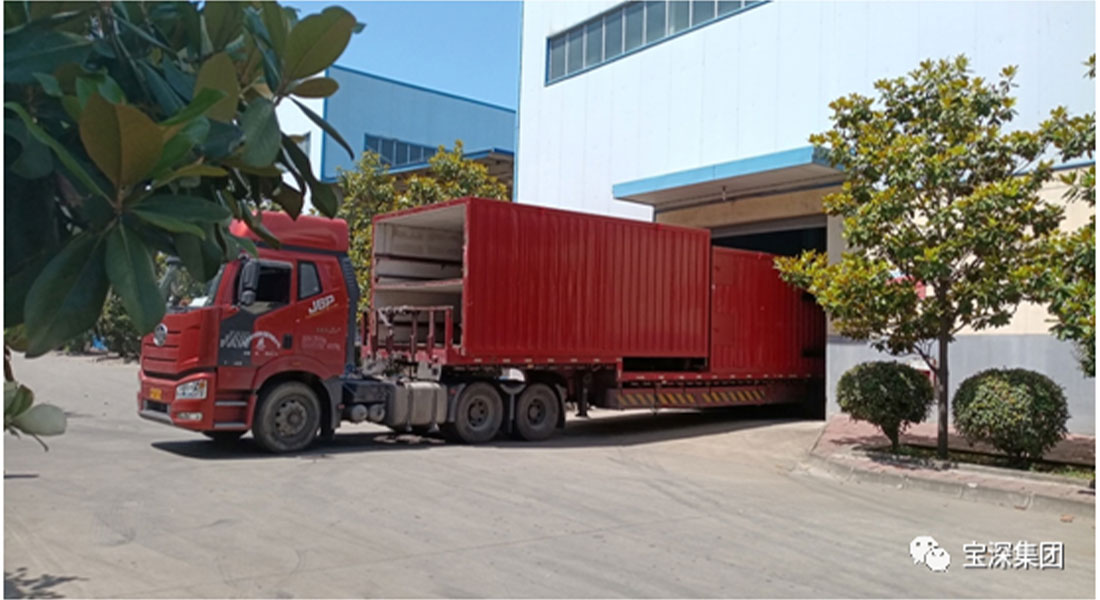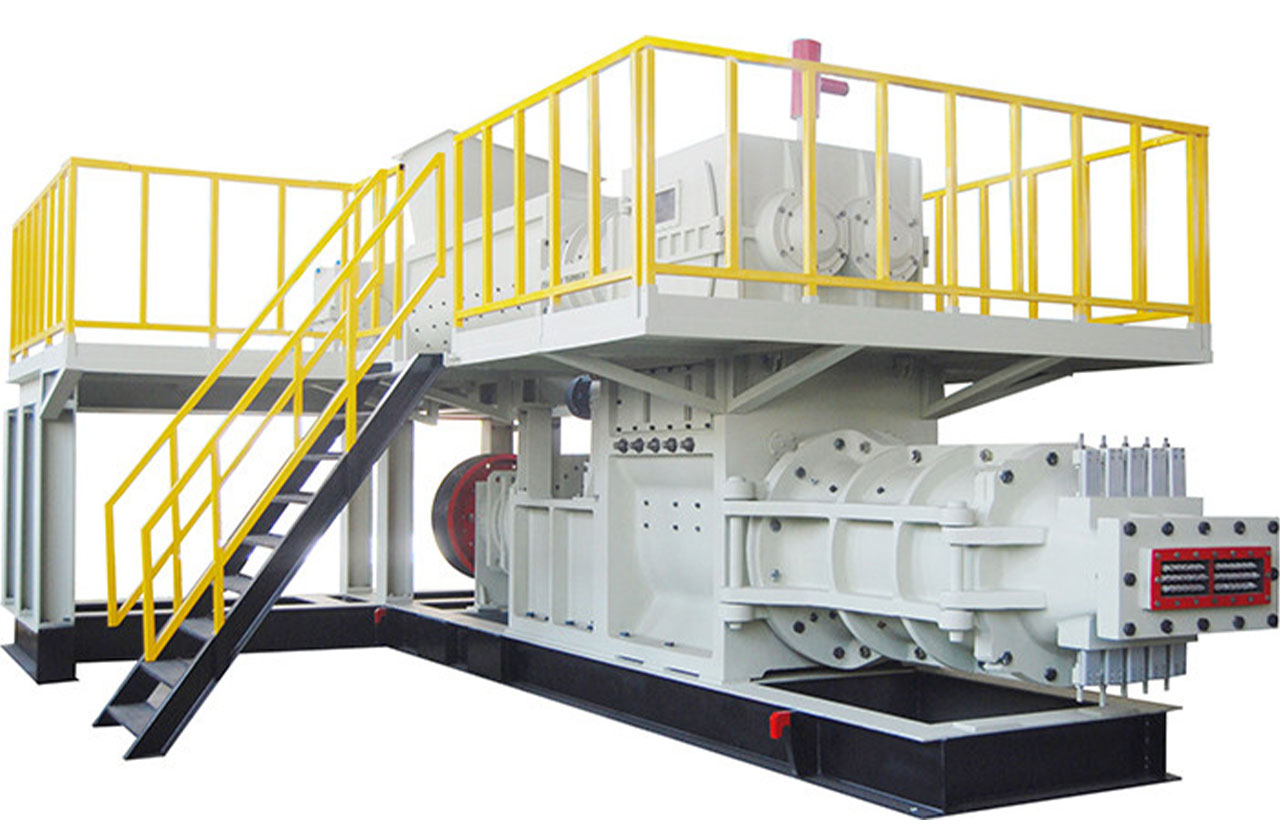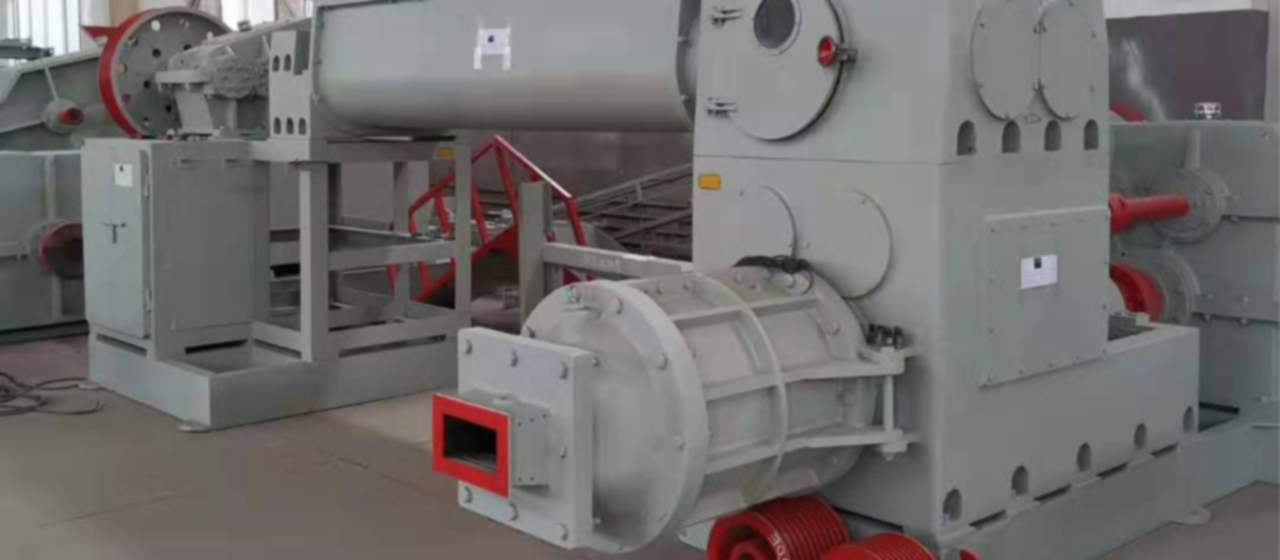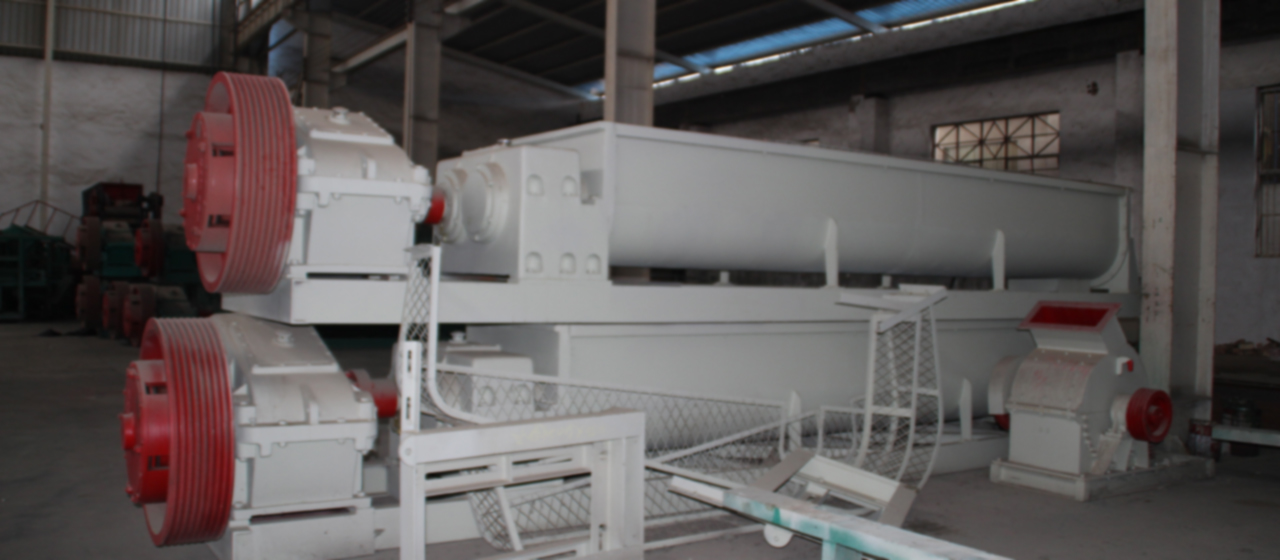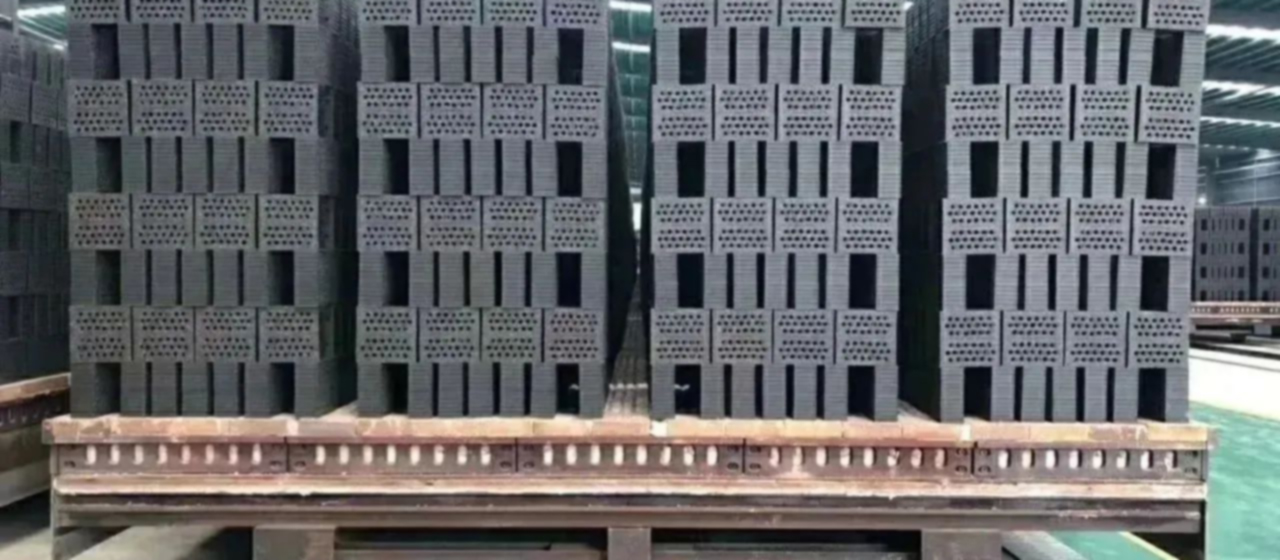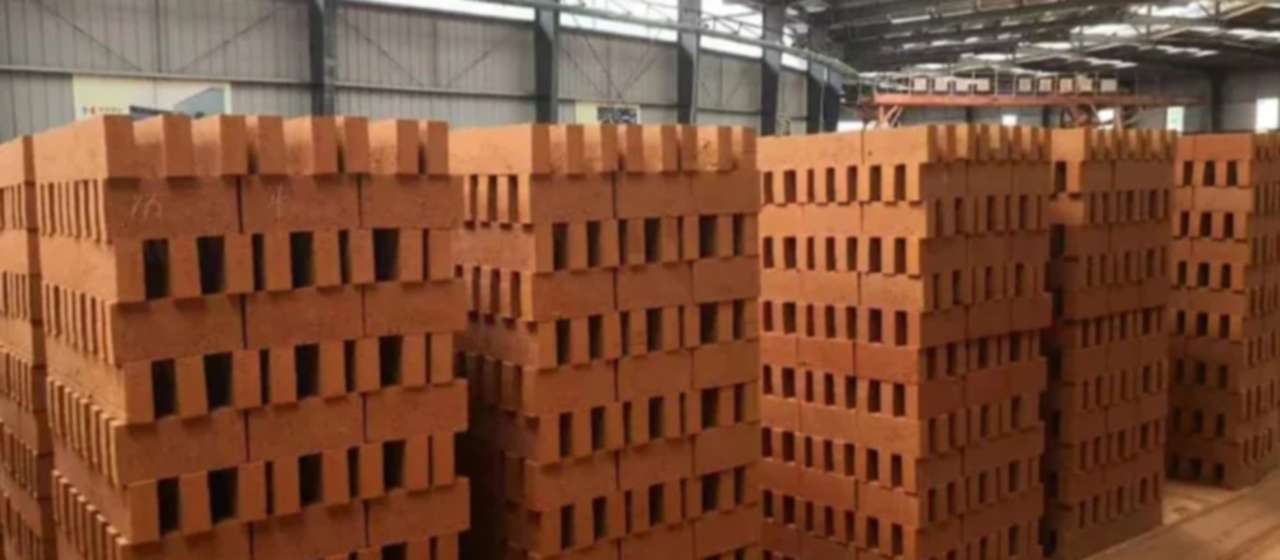Brick Kiln Furnace china
At the end of each year, the production of most wall material enterprises is affected by weather or the Spring Festival holiday, and they will always shut down for a period of time. This period can be used to conduct comprehensive inspection, maintenance, or technical transformation of kilns and tunnel kilns, in order to make production more convenient and efficient in the coming year.

1. Maintenance
After about three days of cooling after the kiln is turned off, all the kiln cars inside the kiln can be pulled out. By carefully inspecting the inside and outside of the kiln and related ancillary facilities and equipment, and understanding the aging and damage situation in various places, a maintenance plan can be formulated.
1.1 Pressure smoke exhaust
Check for air leaks, cracks, collapses, and other phenomena in the main flue and branch flue. Clean up debris that affects ventilation such as smoke and rust, and weld or replace severely rusted metal pipes. Clean up the broken blocks inside the Hafeng to solve the problems of hindering suction and affecting the preheating of the lower part of the billet stack, and repair the wall of the Hafeng air outlet that was damaged due to the collapse of the billet stack. Understand the usage status of air dampers, including durability and whether they are tightly closed, and whether they can be flexibly opened and closed. By the way, check if the waste heat extraction system is functioning properly and perform a thorough maintenance on it.
1.2 Kiln Wall and Kiln Top

Check if there are cracks or protrusions on the kiln wall, and determine if it is a precursor to foundation subsidence endangering the kiln roof. When there are not many small cracks, they can be ignored. Careful attention should be paid to cracks larger than 2mm, especially if the kiln roof is accompanied by bricks falling and protruding, it should be repaired. Otherwise, the bricks may easily rub and collapse, and in severe cases, collapse during operation may cause forced flameout, and even lead to accidents of injury and death. Check if there are any bubbles or lumps on the walls and roofs of the high-temperature section kiln. This is often due to poor materials, improper orientation of the masonry, or insufficient length resulting in high-temperature burning damage. Check if there are any broken bricks or other debris in the contraction and expansion gaps, clean them, and then re plug with aluminum silicate fiber cotton. Understand the number and degree of damage to the curved sealing bricks, which are mostly caused by the following reasons: ① excessive or wide (some production defects or deformation caused by derailment, falling, and collision of the kiln car due to careless operation) kiln car scratches; ② Defects in partial masonry or track laying of kiln walls; ③ The scraping of collapsed brick stacks. If the curved sealing bricks are damaged several times in a row, it will endanger the safety of the kiln wall and roof.
1.3 Sand sealing
After a year of use, the sand particles in the sand sealed groove are mixed in large quantities with broken bricks, soil debris, fuel residue, and sand particles that have become finer due to friction, which will have a negative impact on the normal sealing. Clean all of them thoroughly before sieving them, removing any impurities that are too large or too fine, leaving behind “dry sand particles” the size of mung beans for later use. Repair the sand trough that has been squeezed or scratched, and then load the screened sand particles. Check if the Gaza pipe is unobstructed, as it is prone to blockage due to sand particles being too wet or mixed with large debris.
1.4 Track
Due to the year-round high-strength rolling of the kiln car, coupled with the hard passage of individual faulty car wheels, or the inadequate laying of the track itself, high load thrust and heavy pressure will be applied horizontally, longitudinally, and downwards to the track. In minor cases, it may cause loosening of fixed screws, pressure plates, or inference of connecting clamps. In severe cases, it may cause deformation, fracture, or displacement of the track, making it impossible for the kiln car to pass through normally. To re measure and correct the level and parallelism of the track, carefully check for cracks, severe wear, and other phenomena. For small-sized tracks that do not meet the load capacity, they should be replaced with new ones.
1.5 Fire Eye
The function of the fire eye is to observe and handle the fire situation as well as the inlet for external fuel injection. After high-temperature roasting, it is prone to damage, leakage, or tilting. Especially in some interlayer cavities between the internal kiln roof and the upper working face, which are prone to air leakage on the inner wall of the fire eye, can cause cold air to invade the negative pressure zone and temperature to overflow in the positive pressure zone. The tilted fire eye makes it difficult to fully understand and grasp the fire situation as it cannot see the middle and lower parts of the brick stack.
1.6 Kiln door
The materials used for kiln doors are generally divided into two categories: iron and canvas. Iron doors are divided into several types, including lifting, sliding, and rolling shutters. While lifting doors are more convenient to use, they consume electricity and are not safe. During the lifting process, they are prone to falling off, injuring people, or deforming due to impact. Canvas doors may have a lower cost, but they are prone to being damaged by high temperatures when the fan is shut down or when squatting on fire.
The kiln door is often damaged by scratches and smoke from shuttle buses, especially iron doors that are prone to inflexibility in opening and closing and lack of tightness in sealing. The cool breeze from the outside will be sucked in a lot, reducing the wind pressure inside the kiln and affecting the normal firing speed.
1.7 Kiln car
When the sand sealing braze plate of the kiln car is thinner than 0.6cm, it is highly susceptible to external force impact and curl and deform, affecting the sealing performance or scraping the kiln wall or collapsing the sand sealing groove. After the deformed brazing plate is basically restored to its original state through hammering or gas welding, the overly thin brazing plate can be replaced or reinforced by thickening (welding repair) at both ends.
For phenomena such as deformation, severe rust, and cracking of the kiln car beam frame, they should be handled according to the situation.
After the deformation of the beam frame, it causes poor sealing, inability to enter the kiln, or changes in the parallel condition of the wheels, resulting in the kiln car derailing or crushing the track from time to time. The deformation of the beam frame is caused by the following reasons: ① poor steel quality or small model; ② Severe rust has reduced the original strength; ③ Structural deficiencies, such as no triangular slant support beams or sparse frames; ④ Improper or small area between the top crane and the kiln car during operation; ⑤ The kiln car derailed and fell off the track due to negligence during operation; ⑥ The main beam welding joint cracked and was not reinforced in a timely manner before continuing to be used.
Some companies have their kiln cars that have been used for only 2-3 years and have been rusted and scratched, approaching the point of being scrapped, which is truly regrettable. It is often caused by improper drying or firing operations. In order to ensure the normal operation of drying without damaging the iron components of the kiln car due to the downward pressure of flue gas, the positive pressure can be adjusted to a length of 3-5 parking spaces. Excessive pressure from high temperature to the kiln car during roasting is due to: ① excessive suction force from the bottom air of the car; ② Lack of bottom air blowing (medium to large cross-section) facilities or improper use of cooling belts; ③ Some kilns place the roasting belt at the back of the kiln during the roasting operation. Although this prolongs the preheating zone and accelerates the firing speed, reducing the amount of cold air leakage from the bottom of the roasting belt, poor control can lead to high temperature and pressure on the roasting kiln car.
1.8 Mechanical equipment
Various fans need to be inspected for the degree of rust (casing, blades), the condition of shaft and bearing wear, and whether the lubricating grease is too dirty or lacking for maintenance.
Ferry buses and electric scooters need to be repaired first based on the usage reported by the operators on a daily basis. Appropriate improvements should be made to areas that affect work efficiency and personal safety.
2 Technical Renovation
The purpose of the renovation is to improve the adaptability and sustainable production of the kiln, reduce management difficulties, production costs, etc., and make breakthroughs in output, quality, energy conservation and consumption reduction.
2.1 Three belt layout
The three belts refer to the distribution of three important links in the kiln during firing, which are composed of pre heating zone, roasting zone, and cooling zone (including insulation zone). They each complete part of the firing process during operation, and are interdependent and inseparable from each other. Taking the parallel kiln for baking and firing as an example, the length of most kilns is between 90m and 145m. When the kiln length is within 110m, in order to achieve high production, high quality, and energy efficiency, we have to use the existing kiln length accurately. We can tap into the potential of roasting materials. Each enterprise determines the different roasting systems based on the different raw materials used. They can develop their own kiln roasting system according to the reaction conditions of the products during cooling, which can be roughly divided into two operating modes: mild and sensitive.
Sensitive type: The length of the cooling strip should be between 25m and 35m to ensure that the strength, color, and other performance indicators of the product meet the standards. In this way, the length of the preheating zone can only be shortened to complete the operation, which will inevitably lead to a shorter preheating time for the billet stack, slow down the speed of firing, and cause a decrease in production capacity.
Flat type: The length of the cooling strip should be between 15m and 20m, which does not affect the quality of the product. In this way, the pre tropical zone can be extended to accelerate the fire movement speed. In addition, after the roasting belt moves backward, the positive pressure inside the kiln increases slightly, and the amount of cold air leaked into the kiln bottom decreases or is eliminated, which is beneficial for reducing the underfired bricks at the lower edge of the brick stack. However, it is important to control the timing to prevent the kiln car from being burned out by high temperature pressure.
Based on the reaction conditions of the two cooling phenomena mentioned above, corresponding argumentation and positioning should be carried out for the facilities of the kiln, such as the blast, fire eye, refractory kiln wall, kiln roof, hot water tank, and waste heat extraction. Local unreasonable areas should be renovated.
Some longer kilns, due to the unreasonable layout of the three belts, cannot fully exert their good production performance, such as a small number of fans or insufficient distribution length; The number of rows or the position of the fire eye masonry is too short, which affects the speed of the fire movement.
2.2 Fire Eye
The function of the fire eye is to provide an inlet for external fuel injection and to observe and handle the fire situation. The length along the kiln’s rectangular direction is generally set between 32m and 40m, and the row spacing is between 0.9m and 1.2m. During operation, the roasting belt should be placed in the middle position of the fire eye. The front and back fire eyes can be used to observe the fire situation, or the fire situation can still be controlled due to squatting fire and the roasting belt shifting backwards. The number of horizontal rows should be determined by the cross-sectional size of the kiln, and the distance between the edge fire hole and the kiln wall should be about 20cm~25cm to ensure that the temperature at the edge of the brick stack is raised, without allowing fuel to fall into the gaps at the edge, causing incomplete combustion and not producing optimal temperature. The inner and middle fire eyes have a dual effect of heating and cooling, and can also be used to cool down when the fire temperature is too high.
There is a perception in the industry that it is now a fully internal combustion roasting mode, and any amount of fire eye is enough. It is not uncommon for such kilns to experience difficulties in heating up during ignition, and examples of ignition failures are common. When the lack of fire is caused by small internal combustion or other reasons on a daily basis, the temperature rise of the kiln is also slow and inefficient, and the production of underfired products is inevitable.
2.3 Hafeng
The function of Hafeng is to preheat the stack of billets and provide sufficient combustion oxygen for roasting during the coordinated operation of facilities such as fans and air ducts. When renovating, it is necessary to start from many aspects such as quantity, length of distribution, size of shape, structural design, firmness, and ease of maintenance. For example, in order to strengthen preheating at the bottom of the billet stack and improve the speed of firing, it can be rebuilt at the bottom and in a flat shape, with a height between 35cm and 50cm, a length of about 55cm, and a quantity of no less than 8 pairs. When laying bricks, consideration should be given to the areas where the bricks are resistant to high temperature and collapse, and there should be a function to clean the blocks in the furnace during operation or repair the air brakes.
2.4 Waste heat extraction
The extraction of waste heat is related to the heating temperature of the drying kiln, the full utilization of waste heat energy, and the improvement of the working environment for brick unloading workers. The extraction port should be located above or on the side above the middle and rear of the insulation belt, and a gate device should be made. The extraction distance should be between 12m and 25m, and the extraction length should increase as the cross-section becomes larger or the roasting speed becomes faster. Some kilns have extraction ports located at the bottom of the kiln wall, which limits the amount of heat extracted and should be improved.
2.5 Kiln car
Kiln trucks provide a process platform for production such as drying and roasting, and play an important role in the operation of kilns. Traditional manual palletizing not only requires a lot of labor, but also the standardization level of palletizing and palletizing is uneven. With the increasing shortage of labor resources and the urgent need to improve product quality, various types of palletizing machinery are gradually being promoted in the wall material industry. However, for the convenience of technical operation and the rationality of the shape of the billet stack, there are certain requirements for the upper plane size of the kiln car, especially the length is very important. The length of the kiln car for small and medium-sized section kilns should be equal to the width of the kiln, and the length of the large section kiln car should shrink in a certain proportion to the width of the kiln. Some companies have to invest a lot of manpower and material resources to lengthen or cut the defective kiln cars in order to adapt to the operation needs of the barcode machine. This requires raising the planning starting point when making kiln cars to avoid the passive effects of later equipment upgrades.
2.6 Pressure Balance
The sealing of tunnel kilns is far less strict than that of wheel kilns and trench kilns, especially the weak links of gas accumulation and insulation in the side and lower parts. It is related to the speed of firing, the temperature difference in the cross-section, the uniformity of product quality, and the amount of energy consumption. When the sand seal, curved seal, and kiln bottom pressure system are comprehensively utilized, the sealing performance of the kiln can be improved to a certain height.
At the beginning of the kiln construction, there should be one or two pairs of exhaust fans in the inspection track below the billet end track, and the pressure of the kiln bottom air should be adjusted by the size of the opening. Strive to match the suction force inside the kiln, otherwise cold air may leak into the kiln or the temperature and smoke inside the kiln may be drawn into the kiln. If a high-temperature resistant fan is installed without ventilation, it can also produce the same effect. Set up two air injection ports in the inspection channel of the cooling belt, especially when the heat and positive pressure of the medium and large section kiln are too high, which can effectively control the high temperature and downward pressure of the flue gas and burn out the kiln car.
2.7 Safety and Sustainable Production
For the various facilities and equipment of the kiln that pose risks to personal safety due to design and construction, they should be improved and perfected one by one. Any areas that affect the normal operation of the kiln, especially those that are prone to accidents such as shutdown, should be fully repaired. Some enterprises have to shut down their kilns several times a year due to various malfunctions, causing significant damage to their reputation and economy.

